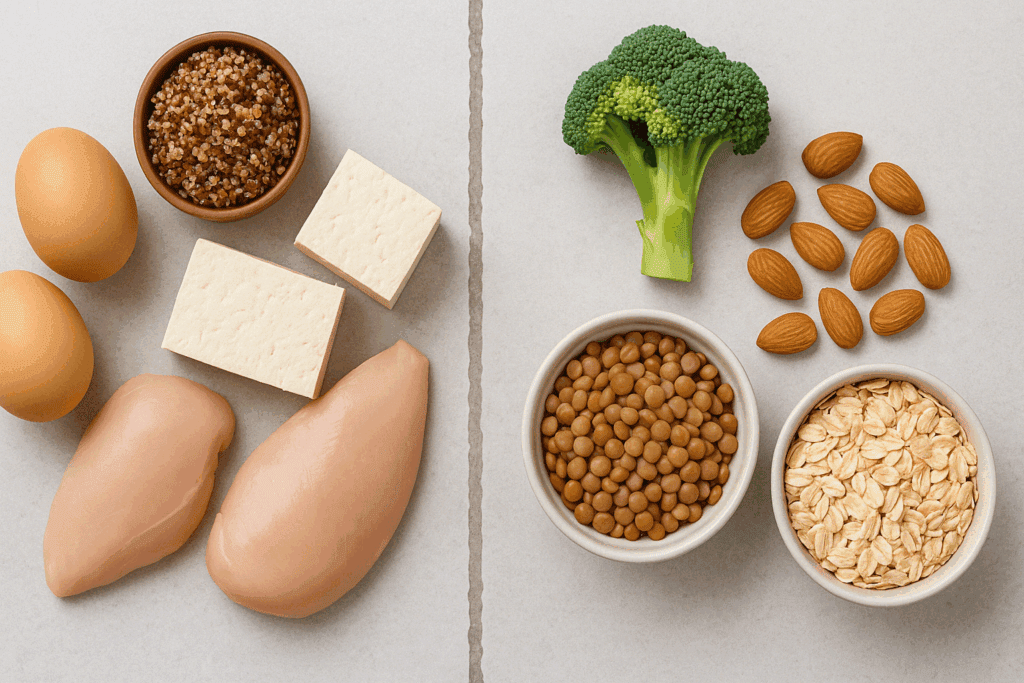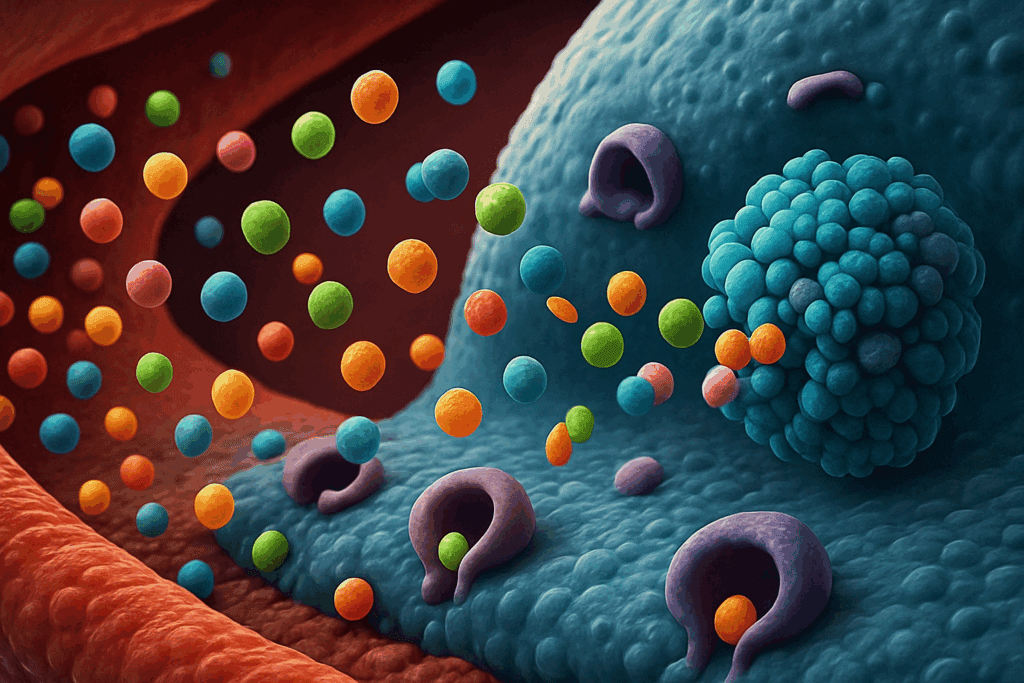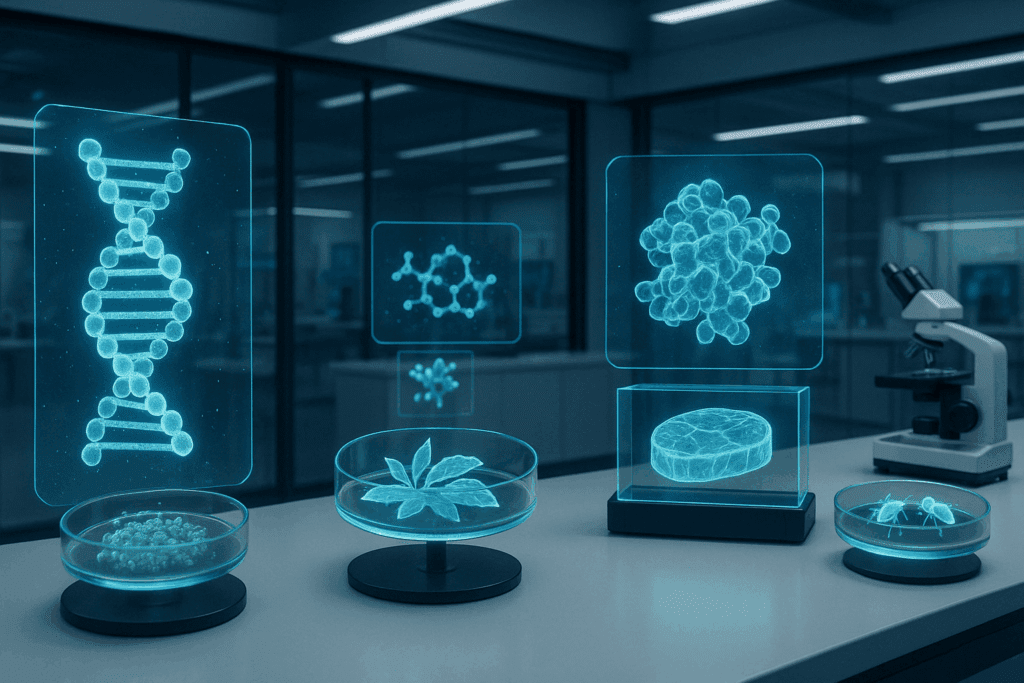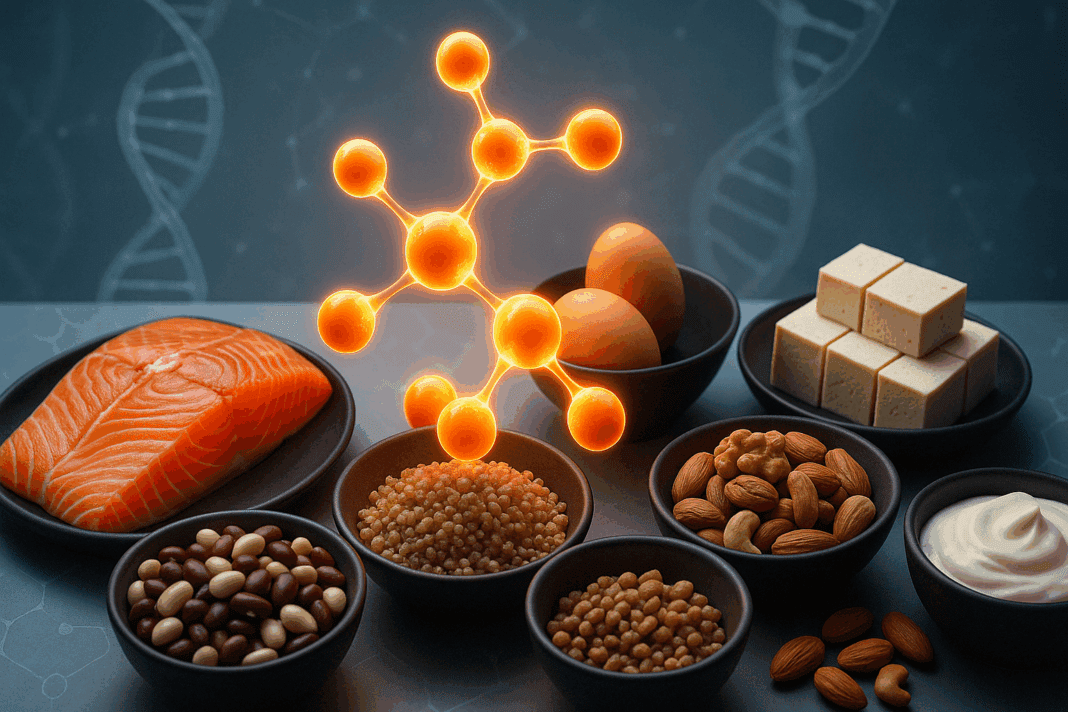In the intricate world of human nutrition, few elements command as much attention or biological importance as proteins. Essential to life itself, proteins are not merely dietary components but foundational molecules that support nearly every function of the body. From muscle repair and immune response to hormone regulation and enzyme activity, the role of proteins is both vast and nuanced. Yet, the true power of protein lies not only in its presence, but in its composition: the amino acids it contains. Among these, essential proteins and their associated amino acids stand out as critical elements that the human body cannot produce on its own. As a result, understanding what essential proteins are and why protein amino acids matter is not just academic—it is a cornerstone of wellness that informs how we nourish ourselves today and how we maintain health in the years to come.
You may also like: Macronutrients vs Micronutrients: What the Simple Definition of Macronutrients Reveals About Your Diet and Health

Understanding What Are Essential Proteins
To understand what are essential proteins, one must first appreciate how proteins function on a molecular level. Proteins are large, complex molecules composed of chains of amino acids linked together in specific sequences. While there are 20 standard amino acids that serve as the building blocks of protein, nine are deemed “essential”—meaning the human body cannot synthesize them independently. These nine amino acids—histidine, isoleucine, leucine, lysine, methionine, phenylalanine, threonine, tryptophan, and valine—must be acquired through food.
A protein is considered “complete” when it contains all nine of these essential amino acids in sufficient proportions. Foods that meet this criterion are classified as essential proteins. These include animal-based sources such as eggs, dairy, meat, poultry, and fish, as well as some plant-based options like quinoa, soy, and buckwheat. In contrast, many plant-based foods contain incomplete proteins, lacking one or more of the essential amino acids. However, through the practice of complementary protein pairing—such as rice with beans—it is possible to assemble a complete amino acid profile from plant sources.
Essential proteins play a critical role in building and repairing tissues, producing vital biochemical substances, and maintaining metabolic balance. Inadequate intake of essential proteins can lead to serious health consequences, ranging from muscle wasting and immune dysfunction to cognitive impairments and stunted growth. These risks highlight the importance of not only consuming sufficient protein but ensuring that the proteins we eat contain the full spectrum of essential amino acids.

The Biochemical Role of Protein Amino Acids in the Human Body
While the term “protein” may evoke thoughts of bodybuilding and gym culture, its physiological significance extends far beyond muscle growth. The real magic of protein lies in its amino acid constituents, which serve as substrates for virtually every metabolic process in the body. When proteins are digested, they are broken down into their constituent amino acids. These amino acids are then absorbed into the bloodstream and transported to cells, where they are reassembled into new proteins according to the body’s needs.
Protein amino acids are not only structural components of tissues but also precursors to neurotransmitters, hormones, enzymes, and immune molecules. For example, tryptophan is the amino acid precursor to serotonin, a neurotransmitter that plays a key role in mood regulation. Tyrosine, which is derived from phenylalanine, is involved in the synthesis of dopamine, epinephrine, and norepinephrine—key chemicals in the brain’s reward and alertness pathways.
In addition to their roles in signaling and communication, protein amino acids are also vital for detoxification, blood clotting, and maintaining acid-base balance. Glutamine, though not one of the essential amino acids, plays a vital role in immune cell function and gut health. The multifaceted nature of these molecules underscores the importance of a well-rounded diet that prioritizes not only quantity of protein but quality and composition as well.

Why Quality of Protein Sources Matters
A common misconception is that all proteins are created equal. In reality, the quality of a protein source is determined by its amino acid profile, digestibility, and bioavailability. High-quality proteins are those that are easily digested and contain all the essential amino acids in optimal ratios. These proteins are more efficiently utilized by the body for tissue synthesis and metabolic function.
Animal-based proteins, such as those found in eggs, milk, and lean meats, are considered the gold standard for quality because they are complete proteins with high digestibility. However, many plant-based sources can fall short unless consumed thoughtfully. For individuals following vegetarian or vegan diets, understanding what are essential proteins becomes even more critical. Through strategic food combinations, such as peanut butter on whole-grain bread or lentils with rice, one can still achieve complete protein intake without relying on animal products.
Moreover, bioavailability—the degree to which a nutrient is absorbed and utilized by the body—varies across protein sources. For example, whey protein has a high bioavailability and is rapidly absorbed, making it ideal for post-workout recovery. In contrast, some plant proteins may be hindered by anti-nutrients such as phytic acid or fiber, which can interfere with absorption. Understanding the science behind protein quality helps ensure that dietary choices are not just sufficient in protein quantity, but optimized for long-term wellness.

Protein Requirements Across the Lifespan
Protein needs are not static; they evolve with age, lifestyle, and physiological conditions. Infants and children require high amounts of essential proteins to support rapid growth and development. Pregnant and lactating women also experience increased demands due to the metabolic needs of fetal and infant development. In these populations, the quality and completeness of protein intake are especially vital.
In adults, protein serves to maintain muscle mass, repair tissues, and support immune function. For athletes or those engaged in intense physical activity, the demand for protein is even greater due to increased muscle turnover and energy expenditure. In older adults, the importance of high-quality protein becomes particularly pronounced, as aging is associated with sarcopenia—the gradual loss of muscle mass and strength. Adequate intake of essential proteins can slow this decline and improve overall quality of life.
It’s also worth noting that protein requirements are influenced by medical conditions. Individuals with chronic illnesses, injuries, or infections may require elevated protein to support healing and immune resilience. In all cases, the inclusion of complete proteins that provide essential amino acids ensures that the body has the building blocks necessary for optimal function and recovery.
The Link Between Protein and Long-Term Wellness
Beyond immediate bodily functions, protein intake has far-reaching implications for long-term wellness. Diets rich in essential proteins have been linked to improved metabolic health, weight management, and reduced risk of chronic disease. Protein has a high thermic effect of food (TEF), meaning it requires more energy to digest compared to fats or carbohydrates. This increases overall calorie expenditure and contributes to satiety, which can help regulate appetite and support healthy body composition.
Moreover, adequate protein intake has been associated with improved glycemic control in individuals with type 2 diabetes, as it slows the absorption of glucose and reduces insulin spikes. There is also growing evidence that certain protein amino acids may have protective effects against cardiovascular disease by reducing inflammation, improving lipid profiles, and supporting endothelial function.
Cognitive health may also be influenced by protein intake. As mentioned earlier, amino acids serve as precursors for neurotransmitters that regulate mood, memory, and attention. A diet lacking in essential proteins may therefore contribute to mental fatigue, mood instability, or impaired cognitive performance. For individuals seeking not just longevity but a high quality of life, prioritizing the intake of protein amino acids through balanced, nutrient-dense foods is a wise investment.

Navigating Dietary Challenges and Protein Deficiency
Despite its critical role, protein deficiency remains a global health issue, particularly in developing countries and among vulnerable populations. Inadequate intake of essential proteins can lead to conditions such as kwashiorkor or marasmus, both of which are forms of severe malnutrition. Even in developed countries, subclinical protein insufficiency can occur, especially in elderly individuals, those with eating disorders, or individuals adhering to overly restrictive diets.
Symptoms of protein deficiency may include fatigue, hair thinning, skin problems, slow wound healing, and frequent infections. These signs are indicative not just of inadequate protein quantity, but of a lack of essential amino acids required for cell repair and immune defense. Addressing protein deficiency involves more than just increasing caloric intake—it necessitates a focus on the inclusion of complete, bioavailable protein sources.
Individuals with dietary restrictions—whether for ethical, cultural, or medical reasons—must be especially vigilant in ensuring they meet their needs for essential proteins. This may involve the use of fortified foods, protein supplements, or careful meal planning with the guidance of a registered dietitian. In all cases, the goal is to ensure that protein consumption supports both immediate bodily needs and long-term health outcomes.
Practical Strategies for Meeting Your Protein Needs
Incorporating adequate levels of essential proteins into your diet does not require complexity but does benefit from intentionality. For omnivores, including a variety of protein sources such as poultry, eggs, dairy, and fish can provide a robust and complete amino acid profile. Emphasizing lean meats and avoiding excessive processing can further enhance the health benefits of these foods.
For plant-based eaters, combining complementary proteins is key. Pairing legumes with grains, seeds with vegetables, or tofu with brown rice can ensure complete amino acid coverage. Fortified plant-based milks, protein-enriched cereals, and meat alternatives made from soy or pea protein can also support adequate intake. Understanding what are essential proteins helps guide these choices, ensuring that meals are nutritionally complete.
Meal timing and distribution are also important considerations. Spreading protein intake evenly across meals—as opposed to consuming the majority at dinner—may enhance muscle protein synthesis and improve metabolic outcomes. Incorporating protein into breakfast, such as through eggs, Greek yogurt, or plant-based smoothies, can set a strong nutritional tone for the day.
Hydration and overall nutrient balance should not be overlooked. Protein metabolism requires adequate water intake and functions best within a diet that also provides fiber, healthy fats, vitamins, and minerals. In this holistic context, protein becomes not just a macronutrient, but a central player in a symphony of wellness.

How Science Continues to Evolve on Protein and Amino Acids
Scientific understanding of protein and its essential amino acids continues to evolve, with ongoing research exploring new frontiers in nutrition, performance, and disease prevention. Advances in metabolomics and systems biology are shedding light on how individual amino acids interact with cellular pathways, influence gene expression, and affect long-term health.
There is increasing interest in the concept of protein quality beyond just amino acid content—considering factors such as environmental sustainability, digestibility, and individual variation in protein utilization. Personalized nutrition is emerging as a field that may soon tailor protein recommendations based on genetic makeup, microbiome composition, and metabolic profile. These innovations underscore the complexity of protein nutrition and reinforce the importance of making informed dietary choices grounded in the best available science.
Moreover, novel protein sources such as algae, insects, and lab-grown meats are gaining traction as sustainable alternatives to traditional protein foods. As global populations grow and environmental concerns intensify, diversifying our protein sources while maintaining nutritional integrity will be a key challenge for future generations. In this context, understanding what are essential proteins and the indispensable role of protein amino acids becomes even more relevant—not only for personal health but for the health of the planet.
Frequently Asked Questions (FAQ): Essential Proteins and Protein Amino Acids
1. Can plant-based eaters meet their needs for essential proteins without supplements?
Yes, it is entirely possible for individuals following a plant-based diet to meet their needs for essential proteins without relying on supplements, but it does require strategic planning. Combining different plant-based foods—such as legumes with whole grains—throughout the day can help ensure that all nine essential amino acids are consumed. While many plant proteins are incomplete on their own, thoughtful pairing can effectively create a complete protein profile. This approach is especially relevant when understanding what are essential proteins from a dietary diversity perspective. Additionally, some plant foods like quinoa, soy, amaranth, and hemp seeds naturally contain a full range of protein amino acids, making them excellent staples in vegan or vegetarian diets.
2. How do protein amino acids influence hormonal health?
Protein amino acids are directly involved in the synthesis of numerous hormones, playing a key role in regulating metabolism, stress response, appetite, and reproductive function. For example, phenylalanine is a precursor to tyrosine, which is required to produce thyroid hormones that regulate metabolic rate. Likewise, arginine supports the release of growth hormone, which is crucial for tissue repair and muscle development. Recognizing what are essential proteins becomes critical when assessing hormonal imbalances, particularly in individuals experiencing fatigue, irregular cycles, or thyroid dysfunction. A diet rich in diverse protein amino acids helps maintain endocrine health by supporting the biochemical pathways necessary for hormone production and regulation.
3. Do essential proteins support immune system function in a unique way?
Yes, essential proteins provide specific amino acids that serve as building blocks for immune-related molecules such as antibodies, cytokines, and immune cell receptors. For instance, lysine contributes to the production of enzymes and antibodies that defend against viral infections. Histidine supports the function of white blood cells and also plays a role in the synthesis of histamine, which modulates inflammatory responses. While many people think of vitamins like C or D when discussing immune health, understanding what are essential proteins broadens that view by emphasizing the structural and functional contributions of protein amino acids. These molecules support both the innate and adaptive arms of the immune system, enhancing the body’s resilience against pathogens.
4. How does aging impact our need for protein amino acids?
Aging alters the body’s ability to synthesize muscle proteins efficiently, a phenomenon known as anabolic resistance. This means older adults need more high-quality protein to achieve the same muscle-building effects as younger individuals. As people age, the absorption and utilization of certain protein amino acids may also decline, making it even more important to consume complete, bioavailable protein sources. What are essential proteins in this context? They are crucial dietary tools to help preserve muscle mass, bone density, and immune function in older adults. Including leucine-rich foods—such as dairy and soy—can specifically counteract age-related muscle loss and improve functional independence.
5. Are there psychological effects associated with inadequate intake of essential proteins?
Absolutely. Protein amino acids influence brain chemistry, mood regulation, and cognitive performance. Tryptophan, for example, is a precursor to serotonin, which helps stabilize mood and support sleep. Low protein intake, especially of foods containing essential amino acids, may contribute to irritability, brain fog, or even symptoms of depression. Understanding what are essential proteins isn’t only a matter of physical health—it has profound implications for mental well-being. Emerging research also suggests that certain amino acids can modulate stress responses by influencing the hypothalamic-pituitary-adrenal (HPA) axis, further highlighting their role in emotional regulation.
6. Can the timing of protein intake affect how well the body uses protein amino acids?
Yes, the timing and distribution of protein intake can significantly affect how efficiently the body utilizes amino acids for muscle repair and growth. Spreading protein consumption evenly across meals—rather than loading it primarily at dinner—has been shown to improve muscle protein synthesis throughout the day. For athletes or physically active individuals, consuming essential proteins shortly after workouts helps accelerate recovery and reduce muscle breakdown. Research also shows that nighttime protein intake, particularly casein, may enhance overnight muscle repair. This reflects a more nuanced understanding of what are essential proteins and when they should be consumed for optimal benefit, especially in relation to circadian rhythms and metabolic demands.
7. Are there medical conditions that alter how the body uses essential proteins?
Yes, various medical conditions can significantly alter how the body metabolizes and utilizes protein amino acids. Chronic illnesses such as kidney disease, liver disorders, cancer, and gastrointestinal conditions can impair protein digestion, absorption, or utilization. In such cases, understanding what are essential proteins becomes crucial for clinical nutrition strategies. Patients may require protein that is either predigested (hydrolyzed) or supplemented with individual amino acids to ensure they receive adequate nutrition. Additionally, trauma, infection, or surgery can increase protein requirements due to heightened tissue repair and immune demands. In these scenarios, personalized medical nutrition therapy is often necessary to maintain nitrogen balance and support recovery.
8. How do environmental and lifestyle factors affect our need for essential proteins?
Environmental stressors, pollution, physical exertion, and even climate can influence protein needs. High heat and humidity, for example, increase nitrogen loss through sweat, thereby slightly raising the demand for dietary protein. Similarly, high-altitude environments may increase protein turnover due to changes in oxygen availability and metabolic stress. Athletes training in extreme conditions or individuals with high stress levels may also require more protein amino acids to counteract oxidative stress and support recovery. In this context, knowing what are essential proteins allows for targeted nutrition strategies that account for external stressors. Lifestyle habits such as sleep quality, alcohol intake, and chronic stress can further modulate amino acid requirements by affecting metabolism and hormone levels.
9. What is the future of essential protein sourcing in sustainable nutrition?
Sustainable sourcing of essential proteins is becoming a major area of innovation, particularly as global populations rise and environmental concerns intensify. Insects, algae, lab-grown meat, and mycoprotein are gaining traction as alternative sources of complete proteins that are both nutrient-dense and environmentally efficient. These sources offer balanced protein amino acid profiles while requiring fewer natural resources than traditional animal agriculture. Understanding what are essential proteins is fundamental in evaluating the nutritional adequacy of these novel options. As food technology advances, these new protein solutions will likely become mainstream, helping address food insecurity and ecological challenges while supporting long-term human health.
10. How can people assess whether they are getting enough protein amino acids daily?
While tracking grams of protein is a common method, it doesn’t necessarily reflect the adequacy of essential amino acid intake. A more refined approach involves evaluating the quality of protein sources and observing functional indicators of protein sufficiency, such as energy levels, muscle tone, wound healing, and immune resilience. Blood tests can assess nitrogen balance, albumin levels, or specific amino acid concentrations, though these are typically reserved for clinical evaluations. For the general population, diversifying protein intake and understanding what are essential proteins in practical terms—choosing complete proteins or combining incomplete sources wisely—is often the most accessible strategy. Nutritional apps and wearable technologies are also evolving to help users monitor amino acid intake more precisely, signaling a shift toward more individualized protein tracking.
Reflecting on the Essential Role of Protein Amino Acids in Your Health Journey
In the quest for lifelong wellness, few nutrients carry the profound and far-reaching impact of protein. Understanding what are essential proteins and why protein amino acids matter equips individuals to make thoughtful dietary decisions that support both immediate vitality and long-term health. From the cellular level to the systems that govern metabolism, cognition, and immunity, proteins serve as indispensable architects of human function.
The story of protein is not simply about quantity—it is about quality, balance, and bioavailability. Recognizing the importance of complete proteins, particularly those rich in essential amino acids, allows for a more intentional and effective approach to nutrition. Whether you are an athlete aiming to optimize performance, an older adult seeking to preserve muscle mass, or simply someone striving for better energy and wellness, protein is your ally in that endeavor.
By making protein a cornerstone of your dietary strategy—supported by evidence-based choices and practical meal planning—you not only nourish your body but empower your future. In an age of endless health trends and nutritional confusion, the enduring truth remains: essential proteins and protein amino acids matter deeply, profoundly, and irreplaceably. Let that understanding guide your journey toward a healthier, stronger, and more resilient you.


